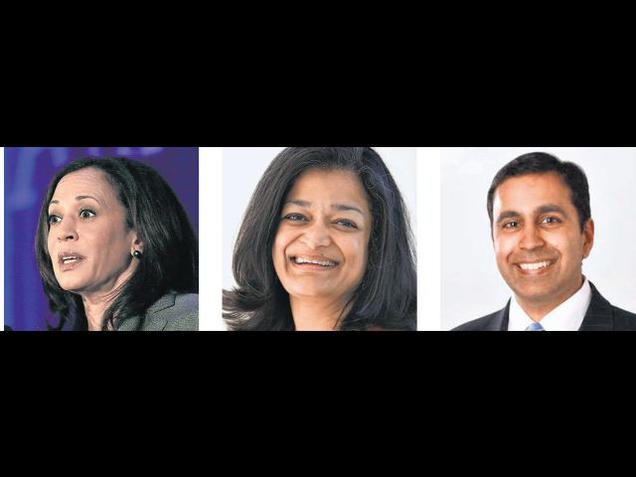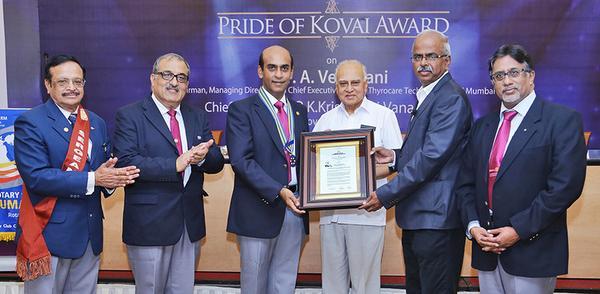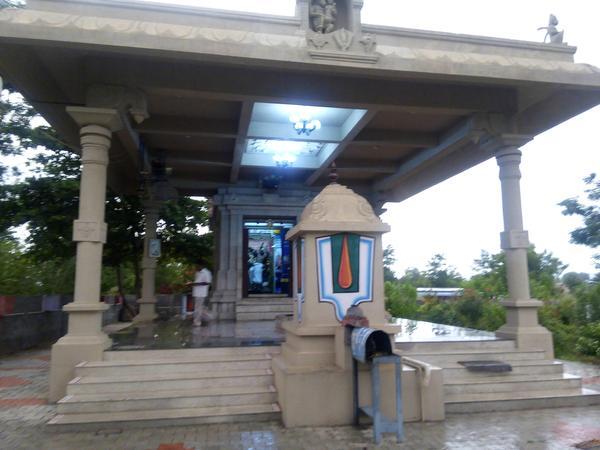Monthly Archives: November 2016
The game is on
Eighteen students from the city are taking part in the Tournament of Champions at Yale University
On November 18, over 3,500 students from 50 different schools around the world will gather at Yale University, U.S., to take part in the Tournament of Champions. And, while that might sound like a jousting challenge, this is part of the World Scholar’s Cup, where the kids will parry their knowledge and intelligence, hone their talents and discover new ones.
It is on this international stage that 18 students from Chennai will be competing. They’ve made it through some rigorous regional and global rounds, and are making their way to Yale this week. Trained by Shaan Katari Libby of A to Zee Creativity, this is the first time that such a large contingent has made it to the tournament in the last 10 years.
Says Shaan, “We’re very proud of these kids for working so hard. At the World Scholar’s Cup, they will have the chance to interact with and learn directly from Yale students and faculty. Last year, we had three students who went to Yale, although six had qualified. This year has been very special so far; hopefully, they will do their country and their schools proud.”
To begin with, the students did the Regionals in Chennai in April 2016, and qualified for the Global Round by placing in the top 15 per cent. “This led to the Globals in Bangkok / Prague, where they competed against 3,000-plus students in each division (Seniors/Juniors) from around the world. They placed in the top 10 per cent, which meant qualification for the Tournament of Champions at Yale,” explains Shaan. They will compete in teams of three.
The schools in the A to Zee Creativity delegation are Sishya, KC High, DAV Boys, DAV Girls, P.S. Senior Secondary and Chennai Public School.
The participating students are Adam Libby, Anirudh Satish, Srinika Rajanikanth, Vichar Lochan, Nila Srinivas, Hrsh Venket, Sanjith Krishna, Vivaaan Nanavati, Tejas Narayan, Ridhi Agarwal, Vanshika Bhaiya, Rohan Manoj, Vipasha Gupta, Tarasha Dugar, Udhav Goenka, Guhan Kallapiran, Vedant Mimani and Naveen Varma.
source: http://www.thehindu.com / The Hindu / Home> Opinion> Features> Metroplus / Susanna Myrtle Lazarus / Chennai – November 15th, 2016
Madras’ milieu beheld from the eyes of a dewan
Although not a diarist in the strict sense, Nemali Pattabhirama Rao , the dewan of erstwhile Cochin State, did maintain a personal diary. It was a small notebook bound with red hard cover with a lock (having an ornamental key) on it — an indication that it was purely personal. But, having seen the value of the contents, Rao’s family decided to make it public in the form of a book. Titled ‘A Dewan’s Diary’ the book edited by Rao’s granddaughter Malathi Mohan was recently released in a function.
Handwritten in neat cursive script, the content is autobiographical. Born in Siddavattam of Cuddappah district, Rao, a graduate from Presidency College (1882) of Madras, after an eventful career in the revenue department, was appointed as the dewan of Cochin State from September 6, 1902. The book reproduces a letter sent to Rao by the Raja of Cochin Sri Rama Verma when the former offered to resign from the post due to bad health. The letter speaks volumes about Rao’s integrity of character.
The Golkonda vyapari community from which Rao hails is a sub sect of Telugu brahmins. While the Telugu brahmins adhered to strict Vedic practices, a group fell out as a secular sect and took up administration, trade and similar works. They were called aaruvela niyogis and a part of them called themselves Golkonda vyaparis — vyapari meaning trader. While the niyogis stuck to Shaivite principles, the vyparis took to Vaishnavism. This religious difference was the only factor that hindered marriage alliances between the two communities. The book says that Rao’s family was one of the rare ones to break the caste-based bias. His niece Rukmini, a freedom fighter married Lakshmipathy, a medical practitioner from Niyogi community of Achanta family.
A major part of the book deals with the acute financial difficulties Rao faced during his tenure as the dewan. During this time Rao had employed Namberumal Chetty — known for building landmark buildings in Chennai — for the construction of a house on Edward Elliots Road (Radhakrishnan Salai; the site now houses AVM Rajeswari Kalyana Mandapam). The house was named Kanaka Bhavan, but unfortunately its construction caused great financial difficulty to Rao. His wife had invested money in Arbuthnot & Co Bank and it was lost when the bank collapsed in 1906. Rao had to complete the house by taking loans from friends and acquaintances. But, after his retirement, repaying the loans became difficult for him. It was during this time that his friend Namberumal Chetty offered him the job of supervisor for a construction. As luck would have it, Chetty and Rao were offered a contract to supply bricks for the construction of Ripon Building by the consultant architect of the then government G T Harris. To be close to the site, Rao shifted to Choolaimedu area and built a house. However his financial difficulties continued and as ill luck would have it he lost his wife in 1909.
It was then that he decided to shift to Madanapalle, where he had a bungalow. Rao records in the diary that in 1918 he sold his house at Edwards Elliots Road to the zamindar of Devakota. He also gives the full particulars of his assets and liabilities and how they should be divided after his death. He continues further till February 1932 and ends the narration as on June 29, 1935.
Apart from familiarizing the reader with the Nemali family and the joys and harrowing times they have undergone, the book has a fine compilation of family pictures that make the text relatable.
(The author is a is a heritage enthusiast and a reviewer of historical books)
Email your feedback to southpole.toi@timesgroup.com
source: http://www.timesofindia.indiatimes.com / The Times of India / News > City News> Chennai News / K R A Narasiah / TNN / November 15th, 2016
A Dutchman’s tale of devadasis, famine
Chennai :
It was while researching the history of the Nataraja temple in Chidambaram that Liesbeth Pankaja Bennink came across Jacob Haafner, a Dutch accountant who lived and worked in India from 1772 to 1786.
Bennink, a historian and Bharatanatyam dancer, found Haafner’s accounts of his travels in India were translated into many languages. She has now finished his biography in English and is looking for a publisher.
Haafner, reveals Bennink, began on a ship trading around the Bay of Bengal, worked as a clerk for a company in Nagapattinam and became an accountant in Madras. During the 1881 madras famine, he was a British prisoner of war, fled to Ceylon (Sri Lanka), lived in Calcutta, and travelled down the coast to today’s Puducherry. Haafner finally left for Amsterdam after the tragic death of his beloved, the dancer Mamia. “After falling on hard times financially , he started writing about his experiences in India to make a living. His work was translated into many European languages, but only one, about his travels in Ceylon, was ever translated into English. He was a much read author in the 19th century .But he was forgotten later,” says Bennink.
What attracted Bennink to Haafner’s works was his deep respect and love for India and its people. “He is a great storyteller, at the same time sharing all kinds of information about the way people live, their festivals, about nature and agriculture, the landscape,” she said.He spoke fluent Tamil and some Hindi and Urdu. “He had enough knowledge of Sanskrit to translate and recount the Mahabharatha and Ramayana into Dutch.”
Haafner, says Bennink, also wrote a lot about Indian dance and dancers. “He inspired many Romantic artists in Europe. For instance the ballet La Bayadere, choreographed in 1877 by Marius Petipa to the music of Ludwig Minkus, was inspired by Haafner’s writing.”
Haafner’s life was extensively researched by Dutch historian Paul van der Velde who also wrote Haafner’s biography , Wie Onder Palmen Leeft (Those living under palm eft (Those living under palm trees), both in Dutch. “As I feel his work is relevant today I started translating some parts, beginning with his chapter about the Devadasis. In 2015, Velde asked me to translate his biography of Haafner. It was challenging. The difficult part was to translate 18th century Dutch to 21st century English, without losing the intent and emotions of the writer,” says Bennink. ” As a historian his work is invaluable to me. He was a staunch anti-colonialist.It would be great if all his work would become available for English speaking readers. He has so much to tell us about this crucial period of India’s history,” she said.
source: http://www.timesofindia.indiatimes.com / The Times of India / News > City News> Chennai News / M.T. Sajul / TNN / November 11th, 2016
They have scaled heights, but retained their roots

Jayapal was born in Chennai, Krishnamoorthi in Delhi, while Harris was born in US
Three of the five Indian-Americans elected to the United States Congress on Wednesday have south Indian connections.
They include Kamala Harris (52), the first Indian-American Senator; Pramila Jayapal (51) the first Indian-American woman in the House of Representatives; and Raja Krishnamoorthi (43), who became a Congressman in his second attempt. All three are Democrats.
Jayapal is the only one born in Chennai; Krishnamoorthi was born in Delhi while Harris was born in the United States.
Understands Tamil
Krishnamoorthi’s parents, of Tamil origin, migrated to the United States when he was only three. He was elected from Illinois’ 8th Congressional district. Krishnamoorthi is the son-in-law of the sister of T.R. Balakrishnan, who retired as the principal of Presidency College in Chennai.
“His father, a physics professor, went from Delhi to teach at a University in the U.S. His family speaks Tamil at home, and while he does not speak the language, he understands it,” said Mr. Balakrishnan, adding that Mr. Krishnamoorthi visited his relatives in T. Nagar regularly.
“He is very devout, calm and organised,” Mr. Balakrishnan said.
Ms. Jayapal, who traces her roots to a Nair family in Palakkad, left the country aged five and lived in Indonesia and Singapore before relocating to the United States as a 16-year-old.
She was elected from Washington’s 7th Congressional district. In March 2000, she published Pilgrimage: One Woman’s Return to a Changing India , saying that she had cultivated an emotional attachment with the country and revealing that she held on to her Indian passport during her formative years.
Harris won from California
Kamala Harris, who won from California, is the daughter of the late Dr. Shyamala G. Harris, world-renowned breast cancer researcher.
Ms. Harris left India as a 25-year-old to study at the University of California, Berkeley.
Her father and Stanford University’s Professor Emeritus Donald J. Harris is of Jamaican descent, which makes Kamala Harris only the second African-American woman senator.
Harris’ niece Meena Harris has been quoted as saying that her aunt likes shopping at Chennai’s Nalli for sarees and GRT for jewellery.
source: http://www.thehindu.com / The Hindu / Home> News> Cities> Chennai / by Deepu Sebastian Edmond / Chennai – November 12th, 2016
‘Pride of Kovai’ award to city doctor

The ‘Pride of Kovai’ award of the Rotary Club of Coimbatore Metropolis was conferred on A Velumani, founder and Managing Director of Thyrocare, here at a function recently.
The Chairman of Bharatiya Vidya Bhavan B.K. Krishnaraj Vanvarayar and the club President Jayakumar Ramdass presented the citation and award to Dr .Velumani for his vocational excellence.
With just Rs 2 lakh he established Thyrocare, which today carries out 50,000 investigations a day and is today a Rs. 33 billion company, the citation said. “The company’s pathology laboratory has been registering a year on year growth of 100 per cent for more than 10 years,” it noted.
In his acceptance speech, Dr Velumani traced his journey, citing valuable work mantras that had helped him. He declared that it was the ‘luxury of poverty’ that had propelled him to excel in his field. Mr Vanavarayar said Dr. Velumani’s life story was fit for inspiring millions. Mr Jayakumar said Rotary Metropolis had chosen Dr Velumani for its vocational excellence award because of his phenomenal achievement through sheer perseverance.
source: http://www.thehindu.com / The Hindu / Home> News> Cities> Coimbatore / Special Correspondent / November 08th, 2016
A shrine of his dreams
Madurai is known for many temples that have a rich past. But the one at Ayilangudi, near Madurai, for Sri Lakshmi Varaha Swami is recent and has an interesting story behind it.
Built by ‘Graphico’ Seshadri, it was a surprise for many known to him to see him undertake the task of constructing a temple.
Though a non-believer, Seshadri, a 78-year-old printer based in Madurai, was inspired by the popularity of the calendar featuring Sri Lakshmi Varahaswami that he had printed. He decided then to build a temple.
Investing his savings and with contributions by friends and devotees, Seshadri began work on the temple in 2007, the consecration of which took place in 2013.
Recalling incidents that prompted him to undertake this task, Seshadrisaid, “I had gone to Ayilangudi to buy land. After the formalities were cleared, a thought flashed across my mind that the land belonged to Sri Lakshmi Varahaswami. I just brushed it aside. But the thought haunted me through the nightand the image of the Lord kept appearing in front of my eyes.
“As if reassuring my thoughts, when I was about to leave for Ayilangudi, a book with a picture of Sri Lakshmi Varahar’s fell from the bookshelf. I was now convinced that the land belonged to the Lord.”
Next, Seshadri went to Mahabalipuram to meet Selvanathan stapathi who offered to make the idol of Sri Lakshmi Varahar for a meagre amount.
“With help from the locals we were able to install the 8 ft. high and four-and-a-half ft. broad idol. Many people came for the samprokshanam that took place on January 23, 2013.
“The highlight was that five Garudas hovered over the gopuram while the proceedings were on.”
In April this year, Varahar Jayanthi was conducted with fervour.
source: http://www.thehindu.com / The Hindu / Home> Features> Friday Review / Charukesi / November 10th, 2016
